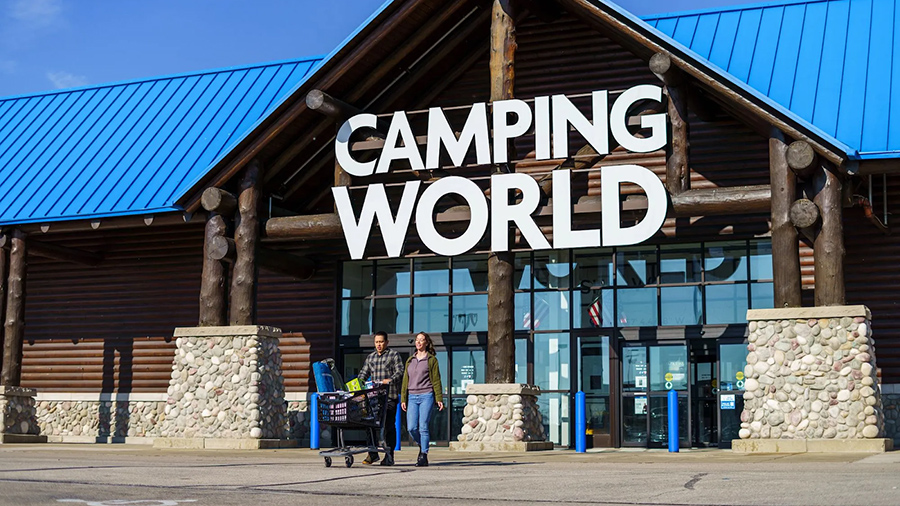Camping World Holdings, Inc. saw revenue decrease 7.1 percent to $1.3 billion in the fourth quarter ended December 31, with used vehicle revenue declining 4.8 percent to $392.6 million and new vehicle revenue falling 13.1 percent. Used vehicle unit sales were 10,334 units for the quarter, a decrease of 335 units, or 3.1 percent. Same-store used vehicle unit sales decreased 7.6 percent for the fourth quarter, and same-store new vehicle unit sales decreased 14.1 percent.
Marcus Lemonis, chairman and CEO of Camping World Holdings, Inc. stated, “The last several years of strong performance has bolstered our confidence in the long-term prospects of our business. In light of the short-term softening of demand and new vehicle margin compression, we recognized the need for aggressive annualized cost reductions, starting in the fall of 2022. This includes reduced headcount, the elimination or reduction of underperforming assets, locations, and business lines, while enhancing the wages and benefits of our employees.”
Total gross margin was 30.6 percent, a decrease of 459 basis points from the prior-year comp period, driven primarily by the higher cost of new vehicles and the lower average selling price of new vehicles. Used vehicles and products, services and other gross margins decreased to a lesser extent. The products, services and other gross margins declined primarily from clearance and discounting on certain product categories to reduce our retail inventory levels and supply chain costs.
Floor plan interest expense was $17.5 million, an increase of $13.3 million, or 315.6 percent, as a result of the rise in interest rates and the increased average principal balance from higher new vehicle costs, higher borrowings on used vehicles, and relief from the new vehicle supply constraints that existed during much of 2021.
At or around December 31, 2022, the company completed the conversion of certain subsidiaries to limited liability companies resulting in income tax expense of $28.4 million, which was primarily for the write-off of deferred tax assets, net of the release of a valuation allowance. CWH expects this conversion will reduce its ongoing income tax expense and reduce its ongoing tax distribution requirements.
Net loss for the fourth quarter was $57.2 million, a decrease of income of $116.5 million, or 196.5 percent. Diluted loss per share of Class A common stock was 79 cents per share in Q4 2022 versus diluted earnings per share of Class A common stock of 54 cents in 2021. Adjusted loss per diluted share of Class A common stock was 20 cents in 2022 versus adjusted earnings per diluted share of Class A common stock of 90 cents in 2021.
Full Year revenue was $7.0 billion, an increase of 0.8 percent. Used vehicle revenue was a record $1.9 billion for the year, an increase of 11.3 percent, while new vehicle revenue declined 2.2 percent. Used vehicle unit sales were a record 51,325 units, an increase of 2,387 units, or 4.9 percent, while new vehicle unit sales were 70,429 units, a decrease of 7,348 units, or 9.4 percent. Same-store used vehicle unit sales increased slightly (+0.1 percent), while same-store new vehicle unit sales decreased 13.6 percent.
Total full-year gross margin was 32.5 percent, a decrease of 306 basis points, driven primarily by the higher cost of new vehicles, which was partially offset by the higher average selling price of new vehicles. Used vehicle gross margin decreased to a lesser extent.
Floor plan interest expense was $42.0 million, an increase of $27.9 million, or 197.9 percent, as a result of the rise in interest rates and the increased average principal balance from higher new vehicle costs, higher borrowings on used vehicles, and relief from the new vehicle supply constraints that existed during much of 2021.
Net income was $351.0 million, a decrease of 45.3 percent for the year. Diluted earnings per share of Class A common stock was $3.22 in 2022 versus $6.07 in 2021. Adjusted earnings per diluted share of Class A common stock was $4.17 in 2022 versus $6.88 in 2021.
New and used vehicle inventories were $1.9 billion at year-end, an increase of $360.1 million. This increase was driven primarily by higher new vehicle unit costs, an additional 14 dealership locations, restocking to normalized levels of new vehicles, and, to a lesser extent, the strategic growth of our used vehicle business.
The company paid an annualized cash dividend of $2.50 per share of Class A common stock, an increase of $1.02 per share of Class A common stock.













